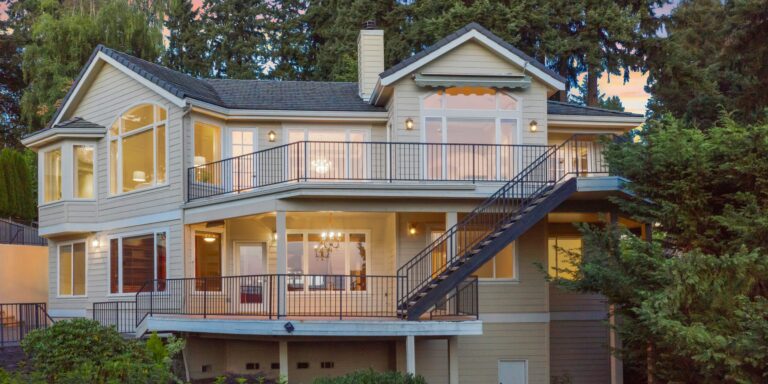The national average home value in the U.S. reached $369,147 in June 2025, marking a modest 0.5% increase from a year earlier, according to the Zillow Home Value Index (ZHVI). This uptick reflects a steady—yet tempered—rise in home prices, with growth far below the double-digit gains seen during the pandemic years. Adjusted for inflation, real values actually slipped slightly month to month, continuing a downtrend from recent peak levels.
A key factor in this recalibration is expanding inventory. Zillow reports that new weekly listings rose by 1.4% year-over-year in June, contributing to a broader surge in available homes for sale—including a noteworthy year-over-year gain in total inventory. HouseCanary’s Market Pulse for June confirms this, showing inventory up more than 23% from the previous year—its highest level since early 2021.
The rise in homes for sale has eased pressure on competitive bidding. Previously fraught with multiple offers above asking price, the market is shifting. Nationally, about 29.5% of homes recently sold above list price, with a median of 17 days on market before going pending—metrics that mirror Zillow’s data through June 30, 2025.
This cooling trend is also evident in HouseCanary’s forecasts. While home prices are expected to continue climbing through late 2025, the pace is projected to slow to sustainable levels as supply catches up. By Q3 and Q4, price appreciation is expected to moderate, signaling a shift toward equilibrium rather than overheated growth.
Though national averages point to stabilization, regional dynamics vary significantly. HouseCanary notes that markets in New England and the Midwest continue to see above-average price growth, driven by tight local supply and growing demand. In contrast, coastal and Sun Belt regions—once leaders in soaring prices—are now entering a cooling phase as inventory increases and affordability concerns rise.
Zillow’s own projection for 2025 shifts from growth to modest contraction. As of June, it forecasts a 1.4% decline in home values over the year, even as existing home sales tick higher to about 4.14 million units. The anticipated downturn reflects a strategic shift: more sellers listing homes, tempered buyer demand, elevated mortgage rates, and gradual realignment of market expectations.
S&P CoreLogic Case-Shiller reports similar sentiment, noting that home price growth slowed to 2.7% year-over-year in April—down from 3.5% in March—and warns that sustained high mortgage rates in the near 7% range could pressure the market further. Although inventory remains comparatively tight, more supply is smoothing out what had been a fiercely competitive environment.
Recent trends also reveal a growing number of sellers opting to delist rather than reduce prices. Realtor.com data shows a 47% year-over-year jump in delistings in May—many in the South and West—indicative of high seller expectations and strong home equity cushioning their decisions. That said, if delistings persist, it could tighten supply again and potentially reverse buyer advantages.
In summary, the U.S. housing market in mid-2025 is shifting from seller dominance toward a more balanced landscape. For buyers, increasing inventory and shrinking bidding wars translate to greater choice and negotiating power. For sellers, patience and realistic pricing are key in a market where buyers feel empowered. Looking ahead, continued but moderated price growth is expected through late 2025, with diversity across regional markets.
While housing prices remain steady at high levels, the influx of listings and moderating growth suggest the market is recalibrating. The transition toward balance should benefit long-term stability and affordability, though local conditions will continue to diverge based on regional economic and inventory dynamics.
National prices are holding firm, but expanded inventory and slower growth—especially in previously overheated regions—are steering the residential housing market toward equilibrium and away from the frenzy of recent years.
